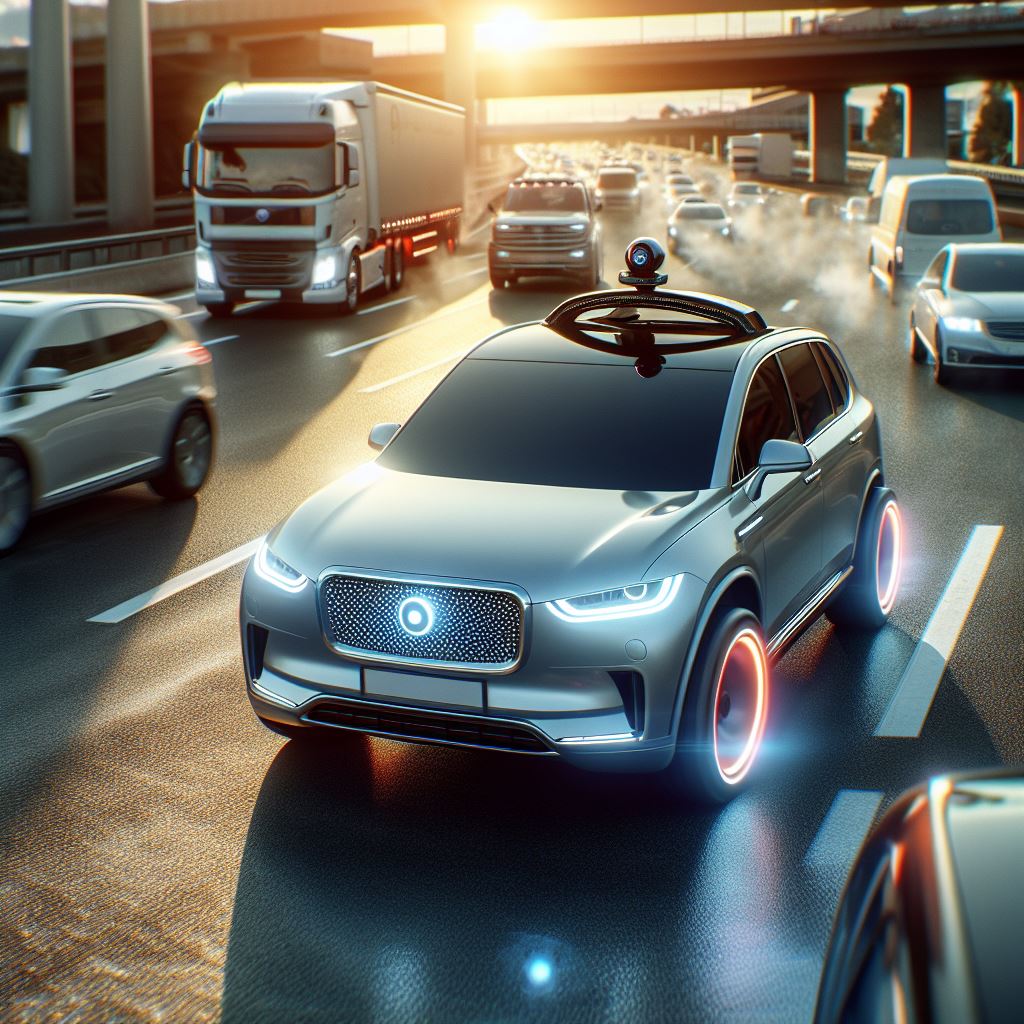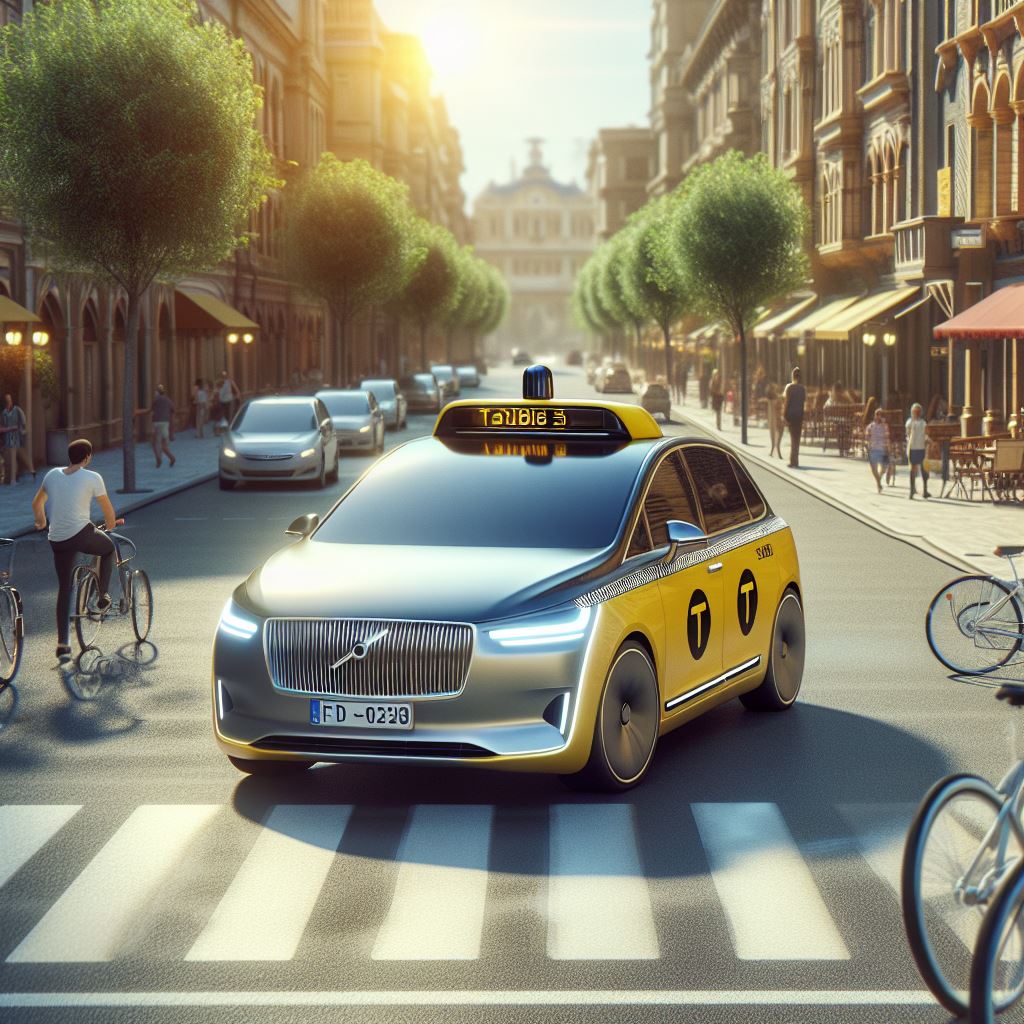The world of transportation is in flux, hurtling towards a future defined by ridesharing apps and sleek, self-driving taxis. While these trends promise convenience and potential safety gains, they also pose unprecedented challenges for the staid realm of auto insurance. Follow along, as CheapInsurance.com explores the insurance issues surrounding emerging mobility trends and their impacts on cheap auto insurance.

Key Takeaways:
- Ridesharing: Shared mobility may reduce car ownership, impacting insurance premiums. Traditional policies may need revisions for ridesharing scenarios.
- Robocars: Liability in self-driving accidents raises new questions. Insurance focus may shift from driver behavior to technology and software.
- Big Data: Personalized insurance based on driving data offers potential discounts and risk assessment, but privacy concerns must be addressed.
- Human Factor: Human oversight remains crucial in partially autonomous vehicles, requiring specific insurance considerations.
- Regulatory Landscape: New regulations are needed for self-driving car insurance and consumer protection. Traditional insurers face competition from new models.
The Gigabytes on the Road: Ridesharing’s Disruption
The explosive growth of Uber and Lyft has already begun to dent car ownership and traditional insurance models. Fewer personal vehicles on the road could mean lower overall premiums, but the rise of shared mobility raises its own set of insurance conundrums. Who’s covered when an accident occurs – the driver, the passenger, or both? Can existing policies handle these novel scenarios? Industry experts believe these questions necessitate revisiting and revising traditional coverage options to accommodate the gig economy on wheels.

Beyond the Wheel: Enter the Robotaxi Renaissance
But the real game-changer on the horizon is the robotaxi revolution. With autonomous vehicles promising to dramatically reduce accidents, the very concept of auto insurance could be radically transformed. The focus might shift from driver behavior to the reliability of vehicle technology and software, blurring the lines between traditional insurance and product liability.
Navigating the Uncharted: Challenges and Opportunities for the Insurance Industry
This paradigm shift presents both challenges and opportunities for the insurance industry. New regulations need to be established to govern self-driving car insurance and ensure consumer protection. Traditional insurers must adapt and compete with innovative models specifically designed for autonomous vehicles.
Yet, the potential for personalized insurance based on real-time driving data from connected cars offers enticing possibilities for risk assessment and targeted discounts.
The Road Ahead for Auto Insurance
As the dust settles on these emerging mobility trends, one thing is certain: the auto insurance landscape is facing a seismic shift. The industry must adapt, and innovate to navigate this uncharted territory, ensuring safety and financial security for passengers, drivers, and the future of transportation itself.

The Shift from Owning to Sharing: Ridesharing’s Impact on Auto Insurance
The days of car ownership being synonymous with transportation are waning. Ridesharing platforms like Uber and Lyft have emerged as viable alternatives, offering convenience and flexibility for urban dwellers. But this shift also presents a conundrum for the traditional auto insurance industry, forcing it to re-evaluate its role in a world where car ownership is no longer a given.
Sharing the Road, Sharing the Risk: How Ridesharing Platforms Are Changing Insurance Needs
Ridesharing platforms have created a complex ecosystem of drivers, passengers, and platform providers, each with distinct insurance needs. Platform-provided insurance often covers passengers and drivers during specific ride phases, but gaps remain, leaving individuals unsure about their liability in various scenarios.
Personal Coverage in a Shared World: Understanding Your Liability as a Rideshare Passenger or Driver
As a passenger, your existing personal auto insurance may offer some coverage in case of an accident. However, understanding the platform’s insurance policy and any potential limitations is crucial. For drivers, traditional policies might not cover ridesharing activities, necessitating additional coverage to ensure financial protection .

Gig Economy, Gig Insurance: Can Traditional Policies Keep Up with Ridesharing’s Flexibility?
The flexibility of ridesharing clashes with the rigid structure of traditional auto insurance policies. Fixed premiums based on annual mileage don’t account for occasional ridesharing drivers, potentially leaving them overpaying or underinsured. New, pay-per-ride insurance models are emerging to address this gap, offering more customized and flexible coverage options for the gig economy.

Navigating the Uncharted: The Road Ahead for Ridesharing Insurance
The evolving landscape of ridesharing necessitates continuous adaptation from both platforms and insurance providers. Clearer communication, comprehensive coverage options, and innovative insurance models are key to ensuring a safe and secure future for all participants in this dynamic transportation ecosystem.
Human Error Out, Algorithm In: How Robocars Could Transform Accident Rates and Insurance Premiums
Human error is a major factor in car accidents, accounting for around 94% in the US alone. By removing the fallible human element, robocars could dramatically reduce crashes and consequently, insurance claims. This could lead to significantly lower premiums, potentially making car ownership more affordable for everyone.
However, the technology is still in its early stages, and some argue that unexpected software glitches or external factors could introduce new risks. The insurance landscape will need to adjust to account for these potential scenarios, possibly with dynamic premiums that fluctuate based on factors like a car’s driving data and software updates.
Who’s Behind the Wheel? Liability and Responsibility in the Age of Autonomous Vehicles
Imagine this: you’re involved in a crash with a self-driving car. Who’s at fault? The car’s manufacturer? The software developer? The owner? Navigating liability in the age of robocars raises complex legal and ethical questions. Existing frameworks designed for human drivers might not suffice, requiring new legislation and regulations to determine who bears responsibility in different scenarios.
From Repair Shops to Data Centers: How Auto Insurance Will Adapt to the Robocar Revolution
The traditional model of auto insurance, which primarily relies on repairs and replacements after accidents, might become obsolete in a world dominated by robocars. Instead, the focus could shift towards data-driven prevention, with insurance companies utilizing real-time driving data from connected cars to assess risk and personalize premiums. This could incentivize safe driving and further reduce accidents.
The rise of robocars poses both challenges and opportunities for the auto insurance industry. By embracing innovation and adapting to this changing landscape, insurance companies can stay relevant and continue to play a crucial role in ensuring the safety and financial security of drivers and passengers in the future of transportation.
Navigating the New Mobility Landscape: Auto Insurance for the Future
The world of transportation is transforming at breakneck speed, leaving traditional auto insurance facing an existential question: Is it future-proof? This section outlines key considerations for choosing an auto policy in a world filled with ridesharing apps, self-driving cars, and micromobility options like electric scooters.
Is Your Insurance Future-Proof? Key Considerations for Choosing an Auto Policy in a Changing World
Gone are the days of one-size-fits-all auto insurance. As mobility options diversify, so too must your insurance approach. Here are some critical factors to consider:
- Ridesharing: Do you occasionally hop behind the wheel for Uber or Lyft? Many traditional policies exclude ridesharing activities, leaving you exposed in case of an accident. Look for policies that offer add-on coverage specifically for ridesharing drivers.
- Autonomous Vehicles: While widespread adoption is still on the horizon, the rise of self-driving cars raises questions about who’s liable in an accident. Choose an insurance provider that stays abreast of these developments and offers coverage options for autonomous vehicles when they become widely available.
- Micromobility: E-scooters, e-bikes, and electric skateboards are gaining popularity, but traditional auto insurance rarely covers them. Consider separate policies or specialized micromobility insurance plans for these alternative modes of transportation.
Beyond the Bumper: Insuring Emerging Mobility Options Like Micromobility and Scooters
Think beyond four-wheeled vehicles! The future of mobility includes a diverse range of options, each with its own unique insurance needs. Researching and securing appropriate coverage for micromobility choices like e-scooters and electric bikes will be crucial for ensuring your safety and financial security.
Personalized Protection: Can Big Data and AI Help Tailor Auto Insurance to Individual Needs?
Imagine an insurance policy that adapts to your driving habits and risk profile. That’s the promise of big data and artificial intelligence (AI) in the future of auto insurance. By analyzing real-time driving data from connected cars, insurers could offer personalized premiums and targeted discounts for safe drivers, further incentivizing responsible behavior on the road, and possibly resulting in cheap car insurance for motorists.
While challenges remain in data privacy and ethical considerations, the potential benefits of personalized insurance powered by big data and AI are undeniable. Stay informed about these developments and choose an insurance provider committed to harnessing technology for safer and more affordable coverage in the years to come.
Summary
The wind of change is whipping through the world of transportation, and the auto insurance industry stands at a crossroads. Emerging trends like ridesharing, robocars, and micromobility present both significant challenges and exciting opportunities. Embracing this dynamic landscape requires agility, innovation, and a commitment to ensuring safety and financial security for drivers, passengers, and all road users in the years to come.
The Road Ahead: What to Expect for Auto Insurance as New Mobility Trends Continue to Evolve
Here’s a glimpse into the potential future of auto insurance:
- Personalized Protection: Big data and AI will revolutionize how we approach risk assessment and coverage. Imagine dynamic premiums that fluctuate based on real-time driving habits, incentivizing safe behavior and lowering overall costs.
- Shared Insurance Models: As car ownership decreases due to ridesharing and micromobility, collaborative insurance models might emerge. Imagine pooling premiums based on usage instead of individual car ownership, creating a more flexible and efficient system.
- Regulation and Adaptation: Governments will need to establish clear legal frameworks governing liability and responsibility in the age of robocars and shared mobility. The insurance industry must adapt these regulations into innovative coverage options, ensuring everyone is protected in this evolving landscape.
- Data Security and Privacy: Harnessing the power of big data comes with its challenges. Robust data security measures and strict ethical guidelines will be crucial to ensure consumer trust and prevent misuse of personal information.
The Final Lap: A Call for Collaboration and Innovation
Navigating the road ahead requires collaboration between insurance companies, technology developers, policymakers, and consumers. By working together, we can unlock the full potential of these emerging trends while ensuring a safe and sustainable future for mobility and auto insurance.
As the dust settles on this transportation revolution, one thing is certain: prepare! The journey ahead promises to be exhilarating, challenging, and ultimately, transformative. It’s time to embrace the opportunities and address the challenges with open minds, creative solutions, and a shared vision for a future where everyone reaches their destination safely and securely.
Bonus: Q & A
Navigating the evolving world of transportation and its impact on your auto insurance can be confusing. This Q&A section aims to clear the air and address some of the most pressing questions on everyone’s minds.
Q: Do I need special insurance if I only occasionally drive for Uber or Lyft?
A: Yes! Most traditional auto policies exclude ridesharing activities, leaving you exposed in case of an accident. Look for add-on coverage specifically for ridesharing drivers or consider switching to a provider with comprehensive policies that cover your gig economy activities.
Q: My car is mostly parked these days due to ridesharing. Can I adjust my traditional auto insurance policy?
A: Yes, some insurance companies offer “low mileage” or “pay-per-mile” discounts for drivers who use their cars less frequently. It’s crucial to inform your insurance provider about your ridesharing activities as well, as some traditional policies might exclude coverage while driving for platforms like Uber or Lyft. Look for companies offering specific add-ons for ridesharing drivers.
Q: What happens to my insurance when autonomous vehicles become widespread?
A: The legal landscape is still under development, but liability questions surrounding accidents with self-driving cars are complex. It’s likely manufacturers, software developers, and owners will all share some responsibility, and insurance policies might need to adapt accordingly. Keep your insurance provider informed about your interest in autonomous vehicles and ensure they stay updated on this evolving field.
Q: Does my traditional insurance cover micromobility like e-scooters?
A: Generally, no. Traditional auto policies prioritize cars and motorcycles. If you regularly use e-scooters or similar options, explore separate micromobility insurance plans for proper coverage.
Q: How will big data and AI change auto insurance in the future?
A: Get ready for personalized premiums based on your real-time driving data. Safe drivers might benefit from lower costs, while risky behavior could lead to higher premiums. This shift raises data privacy concerns, so choose an insurance provider committed to transparency and ethical data practices.
Q: To Follow up – when it comes to personal information from driving behavior anther collected data, how can I remain confident about my privacy when it comes to data-driven insurance?
A: Data security and privacy are crucial concerns. Choose an insurance provider with robust security measures and transparent data-sharing practices. Remember, you always have the right to control how your personal information is used.
Q: What can I do to prepare for these changing trends?
A: Stay informed! Follow industry news, research emerging mobility options, and most importantly, communicate openly with your insurance provider. Discuss your changing transportation habits and explore coverage options that fit your evolving needs. The key is to be proactive and ensure you’re adequately protected in this dynamic landscape


